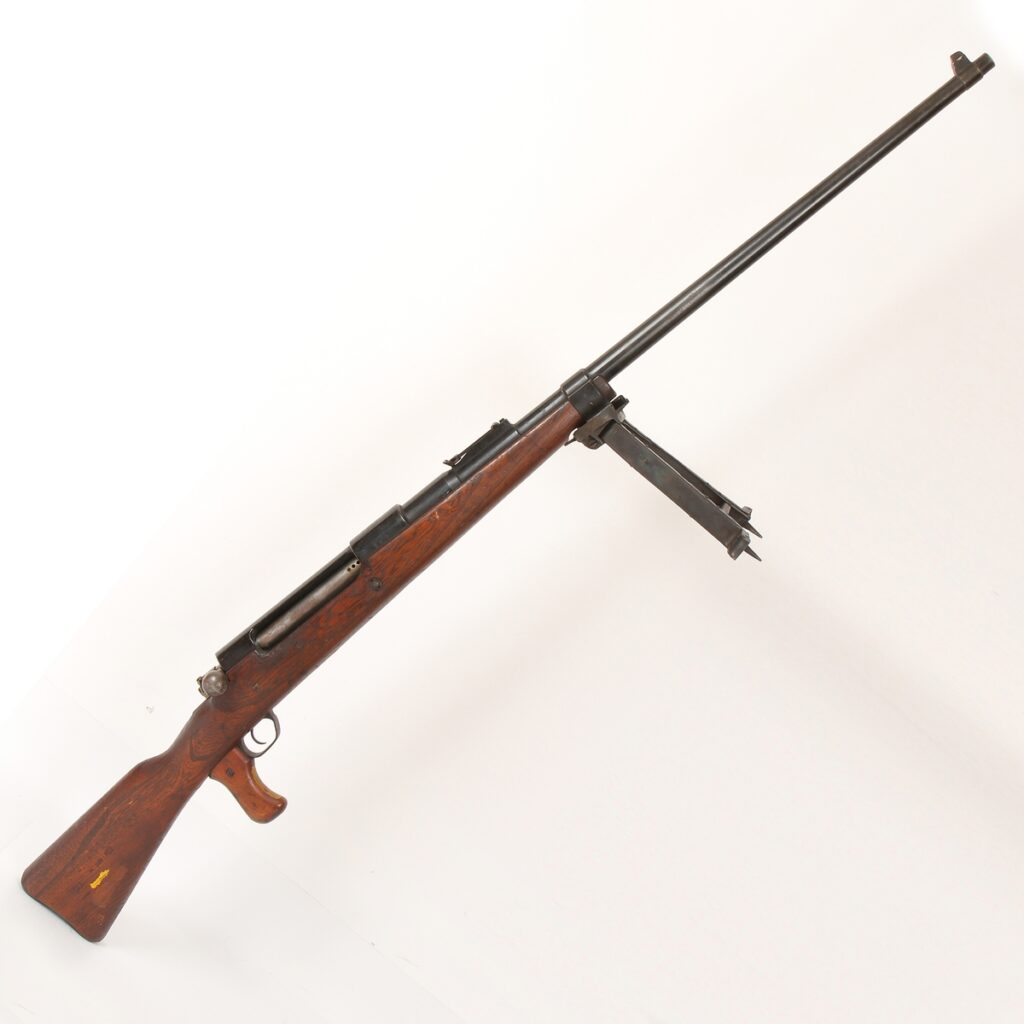
01 German Anti-tank Rifle Tankgewehr 1918 Model, Calibre 13.2 mm Mauser
Fotogalerie





When the first British Mark I tanks appeared on the battlefield in the area of Flers and Courcelete on 15 September 1916 during the Battle of the Somme, their advance caused consternation in the German ranks. Even rifle and machine gun fire could not stop the slow-rolling steel monsters. The terrain damaged with craters was a greater danger to the crew than enemy gunfire, but the Germans didn´t known that then. The very fact that a breakthrough of the line could be made by tanks confronted the German command with the question of how the British machines could be stopped. In November 1917, the German firm Waffenfabrik Mauser in Oberndorf on the Neckar began development of a rifle and a powerful 13 mm cartridge, originally intended for the Maxim MG 18 machine gun, which, however, never made it into production. The 51.5 g steel hardened core bullet had an initial velocity of 785 m.s-1 and penetrated 22 mm armour plate at a distance of 100 metres.
The design of the single-shot rifle itself represented a larger application of the proven Mauser cylindrical slide, and the stock was supplemented with a pistol grip for better handling. Due to its size and weight, it was not possible to fire the weapon without a support consisting of a detachable bipod, originally designed for Maxim MG 08/15 machine guns. The adjustable sight allowed aimed shooting at distances up to 500 meters; however, the success rate increased when shooting at shorter distances, but also when hitting the side walls of the tank in areas of weaker armour.
Although the first anti-tank rifles reached the front lines in January 1918, continuous serial production did not begin until four months later. Because of their size, the British called them “elephant rifles”, as they resembled rifles used for hunting heavy exotic game. Each infantry regiment was assigned two guns: one for deployment on the front line and the other for shooting training. In front-line deployment, the crew consisted of two men, with the gunner carrying the gun and 12 rounds, and the carrier carrying two canvas silencers of 20 rounds each, a bipod and a chest of 72 rounds. However, during combat deployment they took turns firing 2 to 3 shots each, as the sound effect of the shot caused headaches accompanied by feelings of nausea.
The German T-Gewehr anti-tank rifle was the first weapon of this category and by the time the Armistice was concluded, the Oberndorf factory had produced an impressive 15,800 rifles. However, the number of surviving examples in museum and private collections around the world is negligible after nearly a century since their introduction.
Aktuálně

Prosinec 1944 – oficiální vydání prvních poštovních známek osvobozeného Československa

Českoslovenští zdravotníci ve válce v Zálivu

Výzkum u českých krajanů v Chorvatsku

Československý deník sehrál v životě legionářů v Rusku velmi důležitou roli. Poprvé vyšel v prosinci 1917








